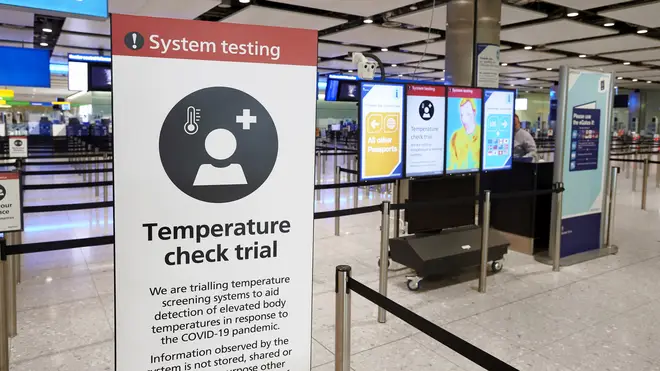
Dom Joly 7pm - 10pm
21 May 2020, 14:13

Heathrow Airport has begun trials of thermal screening temperature checks on passengers to detect coronavirus.
The second busiest airport in the world is trialling technology which can detect body temperature from a distance of eight feet.
It is part of efforts to allow people to travel again without the need for a 14-day quarantine period.
Cameras have been installed in the immigration hall of Terminal 2. The aim is to detect people carrying symptoms of coronavirus before they enter the UK.
Chief executive of Heathrow Airport John Holland-Kaye said the screening trial could be "part of a future common international standard to get people flying again".

Mr Holland-Kaye added that the "mis-match of measures" to check for patients with possible coronavirus infection across different countries "really confuses the travelling public" and said there was a need for a universal standard.
He said: "We have followed Public Health England's advice. Now we have started working with them to introduce this thermal screening. It's not yet government policy.
"But we are a global hub airport, we are the lifeblood of the UK economy.
"Many of our passengers are travelling all over the world , very often connecting, and we need to adopt a common international standard, not just a UK standard."
Listen & subscribe: Global Player | Apple Podcasts | Google Podcasts | Spotify
The boss also signalled his tacit support for Government plans to impose a 14-day quarantine programme for anyone arriving in the UK from abroad, but firmly backed the idea of "air bridges" between countries with lower infection levels.
He said: "The Government's got a tough job to do... If they think the quarantine is the right thing to do I think we have to go with that but it has to be time-limited and we have to plan for what comes next.
"The idea of air bridges... is a very sensible way of doing that.
"There is no perfect way to make sure only healthy people fly at this stage, so we have to take a risk-based approach.
"As the level of transmission comes down in this country and in other countries, we need to find a way that the vast, vast, vast majority of people who don't have a disease can still fly."